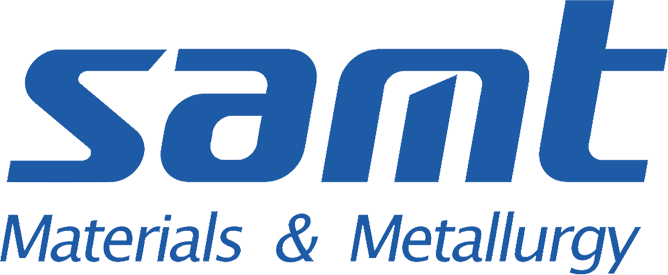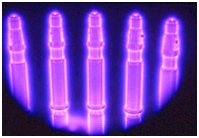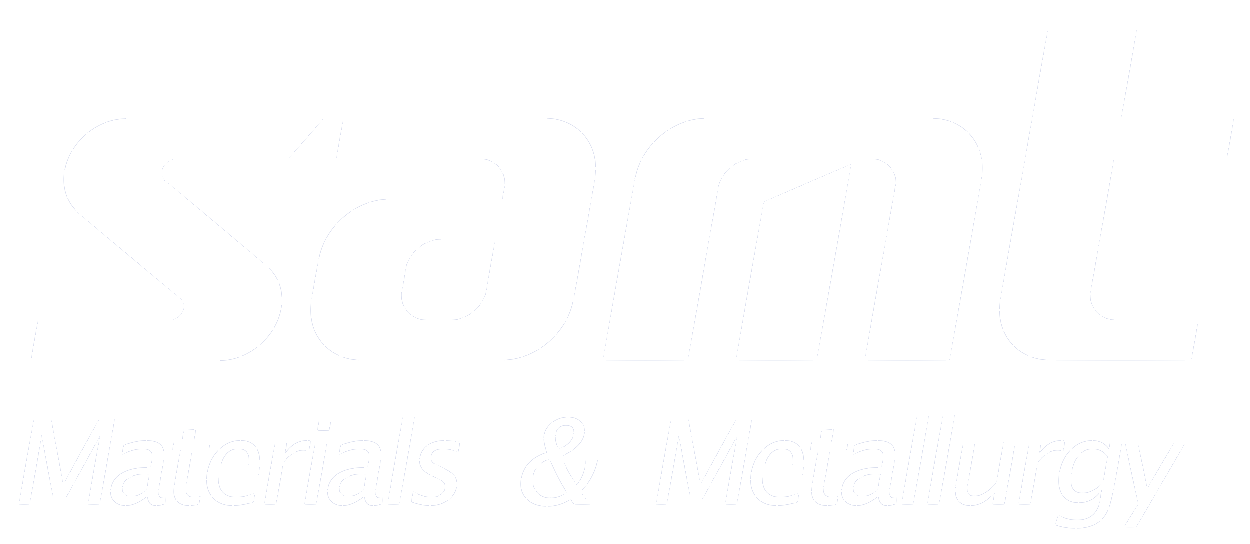-
SAMT® Vacuum Industrial Furnace
Codere® Vertical Modular Heat Treatment Line
Pyradia® Light Alloy Heat Treatment
EMO® Hösel® LPW® Precision Cleaning System
SAMT® Selective Laser Melting Machine
-
SAMT® Vacuum Technology
Codere® Vertical Modular Heat Treatment
Pyradia® Light Alloy Heat Treatment
EMO® Hösel® Industrial Cleaning
LPW® Precision Cleaning
PLASMA, OR ION, NITRIDING, is a method of surface hardening using glow discharge technology to introduce nascent (elemental) nitrogen to the surface of a metal part for subsequent diffusion into the material. In a vacuum, high-voltage electrical energy is used to form a plasma, through which nitrogen ions are accelerated to impinge on the workpiece. This ion bombardment heats the workpiece, cleans the surface, and provides active nitrogen. Ion nitriding provides better control of case chemistry and uniformity and has other advantages, such as lower part distortion than conventional (gas) nitriding. A key difference between gas and ion nitriding is the mechanism used to generate nascent nitrogen at the surface of the work.
The rules applying to nitriding of stainless steel or refractory alloys are no different than those for the other groups of steels, with one exception. The exception is the proprietary de-passivation stage that allows for a removal of oxides of alloying elements such as Cr, Ni and others which, if not removed, will effectively block the nitriding process. The same way they block the rust formation on the stainless steel surface.
GAS NITRIDING is a case-hardening process whereby nitrogen is introduced into the surface of a solid ferrous alloy by holding the metal at a suitable temperature (below Ac1, for ferritic steels) in contact with a nitrogenous gas, usually ammonia. Quenching is not required for the production of a hard case. The nitriding temperature for all steels is between 495 and 565°C (925 and 1050 °F).
on the surface which has good tribological properties (Fig. 1). In addition, the fatigue characteristics of the material can be considerably improved, particularly when nitrogen is retained in solid solution in the "diffusion zone" beneath the compound layer. This is normally achieved by quenching into oil or water from the treatment temperature, usually 570°C (1060 °F).
GNPO has very little effect on distortion and dimensional changes of components. Compared to carburizing and carbonitriding, dimensional changes are significantly lower. Dimensional changes can further be positively influenced by varying the process parameter, e.g. temperature. Due to the creation of a compound layer dimensional changes occur. These changes can be pre-compensated during the prior production process.
FERRITIC NITROCARBURIZING processes are those thermochemical treatments which involve the diffusional addition of both nitrogen and carbon to the surface of ferrous materials at temperatures completely within the ferrite phase field. The primary object of such treatments is usually to improve the anti-scuffing characteristics of ferrous engineering components by producing a "compound layer"
Nitriding of stainless steel has been supposed as niche process and curiously requested by many customers. SAMT is going to provide the qualified process to this market by our thermal processing service by either the independent or the cooperative with commercial heat treater.
On this market, many customers are looking for the qualified nitriding process for stainless steel parts. As a result of many factors, several commercial heat treaters stated their capabilities to provide this service, but usually were not satisfied by the customers in terms of uniformity, and reliability.
The final corrosion resistance of components depends on various factors: material, roughness, surface contamination and dimensions. Standard corrosion requirements of most materials (> 96h in the ASTM B117 salt spray test) is exceeded and GNPO is an environmental friendly alternative to galvanic layers.
The application ranges from single components to production volumes, including a wide range of materials such as unalloyed construction and case hardened steels, quenched and tempered steel can also be treated. For many components from the automotive and hydraulic industriesengineering and mining industries, GNPO is an alternative to salt bath nitriding with oxidation.
Fig. Mild steel after 3 h gaseous nitrocarburizing
in an ammonia/endothermic gas mixture at 570°C (1060 °F)
followed by oil quenching.
Fig. Ball Pivots (Material 5140)
after 280 hours Salt Spray Test
Fig. Plasma Nitriding
SAMT® Vacuum Technology
SAMT® 真空技术
SAMT
SAMT team had the career background of the steel metallurgy company, and profession on heat treatment and surface engineering of metal materials. We have the vision to develop SAMT as the system supplier who independently own the core technology of materials and metallurgy, and keep the world-advanced leading position by the consistent innovation.
Contact
How can we help you?
Telephone hotline
400 615 3008






